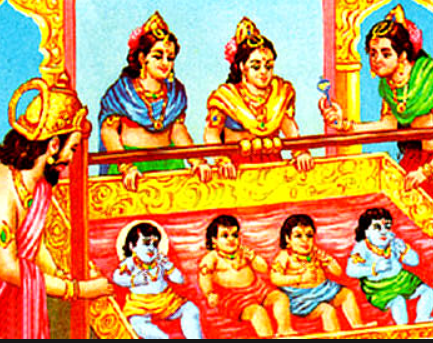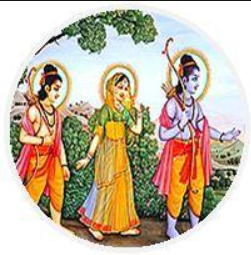The Ramayana: A Profound Epic on Righteousness, Devotion, and Compassion"
The Ramayana is an ancient Hindu epic that tells the story of Lord Rama and his journey to rescue his wife Sita from the clutches of the demon king Ravana. The epic is believed to have been written by the sage Valmiki in Sanskrit and is considered one of the most important works of Indian literature. The Ramayana is divided into seven books or kandas, and here is the full story in professional language.
Book 1: Bala Kanda
The Ramayana begins with the birth of Lord Rama, the seventh avatar of Lord Vishnu. Rama is born to King Dasharatha and Queen Kausalya in the city of Ayodhya. The book describes Rama's childhood, his marriage to Sita, and the exile of Rama and his brother Lakshmana from the kingdom.
Book 2: Ayodhya Kanda
In this book, Rama's stepmother, Kaikeyi, tricks King Dasharatha into sending Rama into exile for fourteen years and making her own son Bharata the king. Rama accepts his fate and leaves the kingdom with Sita and Lakshmana. The book also describes Bharata's refusal to become king and his journey to persuade Rama to return to Ayodhya.
Book 3: Aranya Kanda
During their exile, Rama, Sita, and Lakshmana live in the forests. Ravana, the demon king of Lanka, learns of Sita's beauty and abducts her, taking her to his kingdom. Rama and Lakshmana set out to rescue Sita, encountering various challenges along the way. They also befriend the monkey king Sugriva and his general Hanuman.
Book 4: Kishkindha Kanda
Rama helps Sugriva defeat his brother Vali and becomes the king of the monkeys. Hanuman, the monkey general, discovers Sita's whereabouts in Lanka and informs Rama. Rama and his army of monkeys, including Hanuman, build a bridge to cross the sea and reach Lanka.
Book 5: Sundara Kanda
In this book, Hanuman flies to Lanka and discovers Sita imprisoned in Ravana's palace. He comforts her and brings back news of her location to Rama. Rama sends a message to Ravana, demanding the release of Sita, but Ravana refuses. Rama prepares for battle against Ravana.
Book 6: Yuddha Kanda
The armies of Rama and Ravana face off in a fierce battle. Rama's army, aided by the monkey warriors, defeats Ravana's army. In the final battle, Rama slays Ravana with an arrow, freeing Sita from his captivity. Rama, Sita, and Lakshmana return to Ayodhya, where Rama is crowned king.
Book 7: Uttara Kanda
The final book describes Rama's rule as king of Ayodhya and the events leading up to his departure from the world. Rama banishes Sita to the forest due to doubts about her chastity, and she gives birth to their twin sons, Lava and Kusha. The book also describes Rama's final journey to the heavenly abode and his reunion with his father, King Dasharatha, and his wife Sita.
In conclusion, the Ramayana is a timeless tale of love, sacrifice, and heroism. It teaches us the importance of righteousness and the triumph of good over evil. The story of Lord Rama and his journey continues to inspire and guide people of all ages and cultures.
The Ramayana is not only a great literary work, but it is also an important religious text in Hinduism. The epic is considered a guide for righteous living and is believed to contain spiritual and moral lessons that are relevant to modern-day life. The Ramayana has been translated into many languages and has been adapted into various forms of art, including theater, dance, and cinema.
In addition to Lord Rama, the Ramayana features many other important characters, including Sita, Lakshmana, Hanuman, and Ravana. Each character represents different virtues and qualities, and their actions and decisions in the story reflect these qualities. For example, Rama represents dharma or righteousness, Sita represents purity and loyalty, and Hanuman represents devotion and courage.
The Ramayana also highlights the importance of relationships, particularly those between family members. Rama's love and respect for his parents, his brothers, and his wife are portrayed as key elements of his character. The epic also stresses the importance of fulfilling one's duties and responsibilities, regardless of personal desires and interests.
Overall, the Ramayana is a rich and complex epic that has had a profound influence on Indian culture and beyond. It is a timeless story that continues to capture the imagination and inspire people around the world.
One of the unique aspects of the Ramayana is the emphasis on the power of devotion and the role of divine intervention in the lives of mortals. Throughout the epic, characters such as Hanuman and Jatayu demonstrate unwavering devotion to Lord Rama, which ultimately leads to their success and eventual liberation from the cycle of birth and death.
Moreover, the Ramayana is not just a story of conflict and triumph, but it also highlights the importance of forgiveness and compassion. Despite being wronged by Kaikeyi, Rama forgives her and welcomes her back into his kingdom. Similarly, Rama extends compassion towards Ravana, even in the midst of battle, recognizing the inherent goodness in him.
The Ramayana also teaches us about the power of love and how it can transcend all barriers. Rama's love for Sita is portrayed as an eternal and unbreakable bond, and his unwavering commitment to her is a testament to the power of true love.
In addition to its spiritual and moral lessons, the Ramayana also provides a glimpse into ancient Indian society and culture. The epic touches upon various aspects of life in ancient India, such as the role of kings, the caste system, and the importance of traditions and rituals.
Overall, the Ramayana is a masterpiece of Indian literature that has stood the test of time. Its enduring appeal lies in its ability to convey timeless truths about life and the human experience, and its relevance to modern-day issues and challenges.


















0 Comments